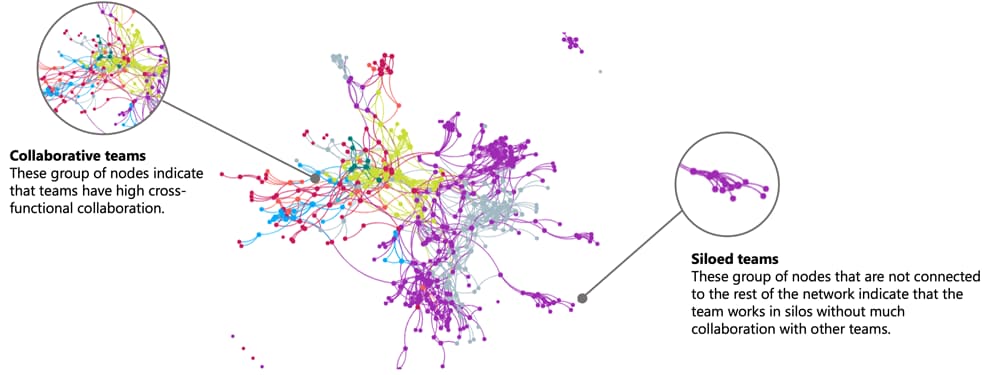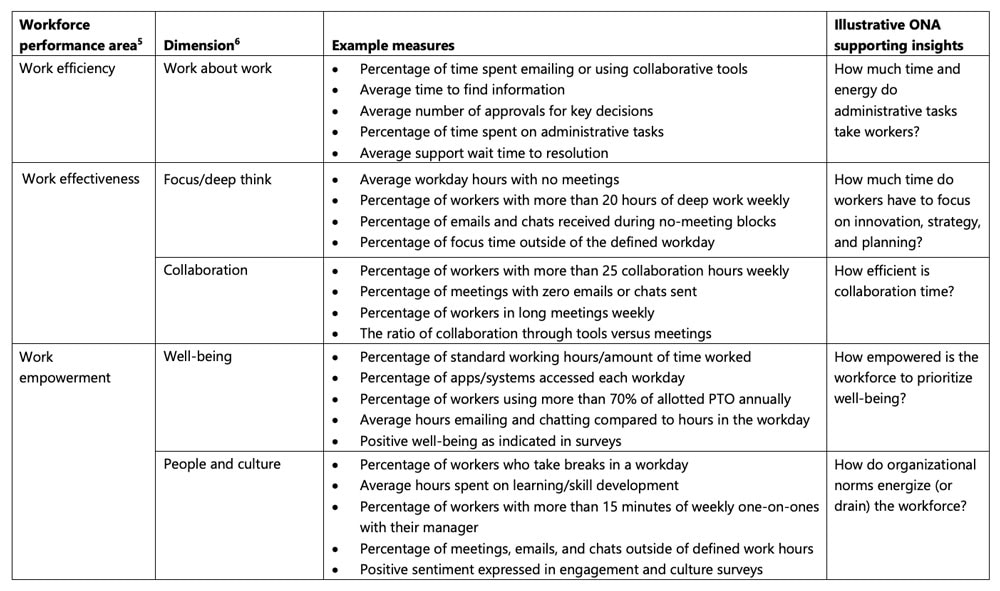Organization Network Analysis (ONA) | Deloitte US has been saved
Authored by Maya Bodan, Don Miller, Sue Cantrell, Gary Parilis, and Carissa Kilgour
In a rapidly evolving work environment transcending physical offices, conventional working hours, and traditional organizational structures, organizations need new kinds of insights to understand, measure, and assess workforce performance. In particular, the stakes are now higher to understand how people interact, how patterns of interactions affect business outcomes, and how to modify behavior to improve those outcomes. Innovations in data analytics and artificial intelligence (AI) make this kind of intelligence possible.
Organization network analysis uses network science and specific metrics to analyze and visualize how communication and information flow within an organization1. By collecting and analyzing data from surveys and work applications, organizations can harness the power of data, analytics, and AI. Organization network analysis reveals insights absent in traditional organizational charts—such as how people collaborate, who influences decision-making and/or operates in silos, and sentiments surrounding trust and influence. Organization network analysis can help leaders understand human connections, visualize relationships, and pinpoint potential barriers to success (figure 1).
Figure 1: Organization network analysis can help uncover collaboration within an organization

Measuring workforce performance
Business outcomes can be measured in various ways. Concrete quantitative metrics are sometimes appropriate; for instance, a web marketing team focused on productivity might emphasize the number of clicks, downloads, or social media posts published. Improvement metrics, such as “increase web traffic by X%,” allow teams to innovate how to achieve that goal. Other business outcomes include measures of quality rates and customer retention.
However, easily measurable key performance indicators alone present an incomplete picture of workforce productivity and business impact. Outcomes of softer objectives that drive relationships, development, and other nonquantitative human results are critically important to the business despite being difficult to measure.2,3
Employers need to create workplaces that workers value being a part of. A Deloitte study revealed that 79% of leaders recognize their responsibility to create value for workers, but only 27% of workers feel their employers are making meaningful progress.4 Quantifying human outcomes in the current landscape—where the value of in-person work is questioned—creates challenges. Organization network analysis offers leaders analytical insights to prioritize human-centric metrics, optimizing workplace strategies to enhance the overall worker experience.
Understanding individual workforce performance
Organization network analysis (ONA) insights can be especially helpful when evaluated in conjunction with individual and team workforce performance measures that influence business outcomes or productivity.
Organization network analysis measures behavior patterns associated with productivity (which requires objective definitions of productivity; that is, defining what constitutes productivity for different teams, functions, and businesses) once desired outcomes are specified. These can be determined through expert judgment, focus groups, and interviews, or more quantitatively with analytics. What kinds of patterns are optimal depend on the business circumstances and requirements. For example, sometimes, broad network interaction (collaborating outside one’s team) is necessary, while in others, it may be distracting—and collaborating with immediate colleagues is best (siloed teams can be good).
Informal influencers often differ from an organization’s formal leaders and can offer a valuable perspective on how productively work gets done independent of formal hierarchies. These insights highlight how worker demographics are distributed networkwide and how factors such as function, business unit, or geography affect team dynamics and productivity. In a boundaryless organization,7 workforce performance transcends traditional indicators, highlighting the importance of visibility into informal collaboration. Organization network analysis can uncover hidden insights and reveal how information really flows within an organization giving leaders the insights to make informed decisions and optimize workforce performance.
Leveraging ONA to optimize workplace strategies
Organizations are struggling to balance in-person and virtual interactions. While many organizations encourage returning to the office—expecting in-person interaction to spark workforce performance and innovation requires nuanced understanding of how people can and do work. While executives desire in-office work to stimulate creativity and connection, they also tend to have expensive, long-term real estate commitments that are not being fully utilized—creating pressure on defining the purpose and value of the office. Commuting also contributes to environmental footprints, and workers may hesitate to lose flexibility.
Using organization network analysis, leaders can answer some critical questions:
- How many team members are colocated?
- Who should be colocating—under what circumstances and why?
- What work can or would best be done independently?
- What tools and applications best enable work in different locations?
One consideration is onsite density, which measures the proportion of an individual’s close collaborator network in their physical vicinity in the office. Higher onsite density correlates with a greater appreciation for in-person work. Leaders can leverage the organization network analysis insights on informal influencers in the organization to inform who should come together and when. Understanding these informal networks and influencing spheres can unlock incredible value for leaders in determining which teams should colocate and how the space should be organized when they do. Independent workers who communicate virtually may see limited benefits from in-office work. Interestingly, emerging data suggests that “idea creation is more likely among loose tie networks,” implying that collaborating outside one’s immediate network can foster innovation.
Conclusion
Organizations should responsibly use data, analytics, and AI to gain real-time insights into how workers operate, collaborate, and strategize in today’s work environments. This improved understanding can support value creation and decision-making at multiple organizational levels. Organization network analysis provides performance insights about how workers collaborate—within and across functional and locational “boundaries” in hybrid versus remote work models—and can help leadership establish workplace strategies and policies.
Authors
Contributors
- Yuki Iwase
- Shruti Kalaiselvan
- Ramyasri T M
- Brennan Conway
- Katherine Arriola
Endnotes
1 Deloitte , “Using network analysis to build an agile organization: Create organizational collaboration in a remote workplace,” October 27, 2020.
2 Stephen Lancaster-Hall et al., Humanizing productivity and performance: Productivity and performance in times of disruption, Deloitte, 2020; Deloitte, Beyond productivity: The journey to the quantified organization, May, 2023.
3 Deloitte, Beyond Productivity: The journey to the quantified organization, May, 2023.
4 Sue Cantrell and Corrie Commisso, “Outcomes over outputs: Why productivity is no longer the metric that matters most,” Deloitte Insights, July 19, 2023.
5 Steve Hatfield, “Rethinking the ways we look at productivity in a Work from Anywhere world: How to evaluate remote worker productivity post-pandemic,” Deloitte’s Capital H blog, August 24, 2021.
6 Worklytics, “12 metrics for more effective meetings,” accessed January 4, 2024.
7 Deloitte Insights, New fundamentals for a boundaryless world: 2023 Global Human Capital Trends Report, 2023, p. 80.


